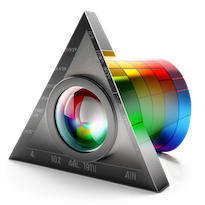Content in this resource is still under active development and should be considered beta. It may change, move, antecede, or be deleted with or without notice.


Tests: Multi Mode Contrast
Introduction
ON THIS TAB
Summary
Visual readability of text requires good visual contrast. Visual contrast is a product of the text characteristics, such as font weight (thickness) and font size, the lightness/darkness difference of the colors used for the text and the background, and other factors.
Different users have significantly different needs in terms of their perception of light and color for reading, or for interacting with content on a self-illuminated display.
How It Solves User Needs
All sighted users need adequate text size and weight, coupled with ample luminance contrast (the perceived lightness/darkness difference) between background and text colors, in order to read the text easily.
Objective
This test method supports the objectives:
Detailed Description
The visual contrast needed for easy reading of text is substantially higher than the contrast needed to simply "make out" words. At least ten times more contrast is needed for good readability than the bare minimum contrast needed for legibility.
Because a person's contrast perception is so variable, different individuals have significantly different needs in terms of their perception of light and color for reading, or for interacting with content on a self-illuminated display.
One way to accommodate these different needs is to provide different color schemes or different modes such as light mode and dark mode, that a user can choose between the solve their individual need.
Dependencies
- An APCA-W3 compliant perceptual contrast calculator
- Are user agent that recognizes "prefers color scheme" and "prefers contrast" media queries.
- The sRGB color space, the default color space for web content
Testing Criterion
ON THIS TAB
Normative/Informative
Multi modes is an informative set of design guidelines, but it is normative regarding the use of certain media queries such as prefers-color-scheme for conformance to the APCA Readability Criterion.
Conformance
ON THIS TAB
Informative
The Paper Reading Experience is an informative set of design guidelines, but it is not normative for the purposes of conformance to the APCA Readability Criterion.
Tests
ON THIS TAB
Informative
The Paper Reading Experience is an informative set of design guidelines, but it is not normative for the purposes of conformance to the APCA Readability Criterion.
Test Methods
ON THIS TAB
Informative
The Paper Reading Experience is an informative set of design guidelines, but it is not normative for the purposes of conformance to the APCA Readability Criterion.
Resources
ON THIS TAB
Informative
The Paper Reading Experience is an informative set of design guidelines, but it is not normative for the purposes of conformance to the APCA Readability Criterion.


